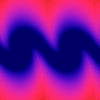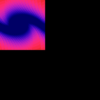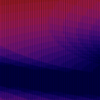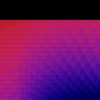imagesetpixel
imagesetpixel — Set the RGB value of a pixel inside a previously opened or created image.
Description
Plugin opcode in image. This opcode is part of the plugin repository and has to be installed separately. The plugin repository can be found here: https://github.com/csound/plugins
Set the RGB value of a pixel inside a previously opened or created image. An image can be loaded with imageload. An empty image can be created with imagecreate and saved with imagesave.
Syntax
imagesetpixel iimagenum, ax, ay, ared, agreen, ablue
imagesetpixel iimagenum, kx, ky, kred, kgreen, kblue
Initialization
iimagenum -- the reference of the image.. It should be a value returned by imageload or imagecreate.
Performance
ax (kx) -- horizontal pixel position (must be a float from 0 to 1).
ay (ky) -- vertical pixel position (must be a float from 0 to 1).
ared (kred) -- red value of the pixel (mapped to a float from 0 to 1).
agreen (kgreen) -- green value of the pixel (mapped to a float from 0 to 1).
ablue (kblue) -- blue value of the pixel (mapped to a float from 0 to 1).
Examples
Here is an example of the imagesetpixel opcode. It uses the file imagesetpixel.csd and imageOpcode02.png.
Example 464. Example of the imagesetpixel opcode.
<CsoundSynthesizer> <CsOptions> ; Select audio/midi flags here according to platform -n ;no sound output </CsOptions> <CsInstruments> sr = 44100 ksmps = 32 0dbfs = 1 nchnls = 2 ; doesn't matter because there is no sound output ; by Menno Knevel 2021 ; image opcodes need a black canvas- black = no sound! giimageOLD imageload "imageOpcode02.png" ; load this image giimagew, giimageh imagesize giimageOLD ; get dimensions of imageOpcode02.png giimageNEW1 imagecreate giimagew,giimageh ; and use those same dimensions giimageNEW2 imagecreate giimagew,giimageh ; for 3 new images giimageNEW3 imagecreate giimagew,giimageh ; instr 1 ; copies imageOpcode02.png and transforms it kndx = 0 kx linseg 0, p3, 1 ; scans x-axis prints "\nwidth = %d pixels, heigth = %d pixels\n\n", giimagew, giimageh myloop: ky = kndx/(giimageh) ; y-axis krd, kgn, kbl imagegetpixel giimageOLD, kx, ky ; get pixels from 'old' image prints "\n--**giimageNEW1 zooms out**--\n" imagesetpixel giimageNEW1, kx*.9, ky*.5, krd, kgn, kbl prints "\n--**giimageNEW2 zooms in**--\n" imagesetpixel giimageNEW2, kx*rnd(10), ky*rnd(10), krd, kgn, kbl prints "\n--**giimageNEW3 zooms in and applies offset on y-axis**--\n\n" imagesetpixel giimageNEW3, kx*rnd(5), (ky*rnd(5)+.2), krd, kgn, kbl loop_lt kndx, 0.5, giimageh, myloop endin instr 2 imagesave giimageNEW1, "imageNEW1.png" ; save those 3 new images imagesave giimageNEW2, "imageNEW2.png" imagesave giimageNEW3, "imageNEW3.png" endin instr 3 imagefree giimageOLD ; unload all images imagefree giimageNEW1 imagefree giimageNEW2 imagefree giimageNEW3 endin </CsInstruments> <CsScore> i1 1 2 i2 2 1 i3 4 .1 e </CsScore> </CsoundSynthesizer>
This is what the image imageOpcode02.png looks like:

and these are the new images imageNEW1.png, imageNEW2.png and imageNEW3.png:


